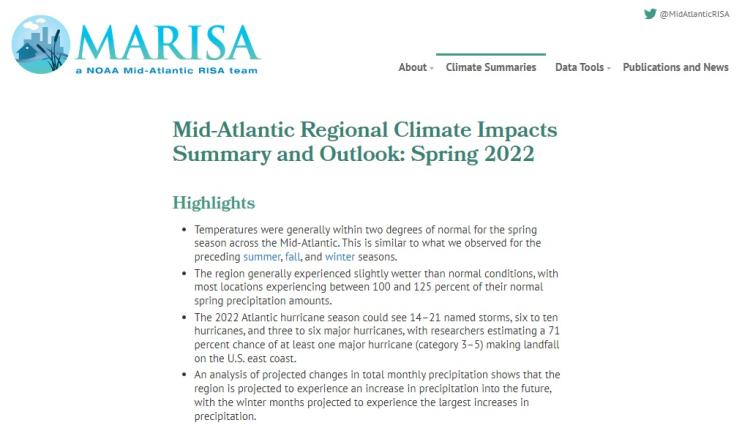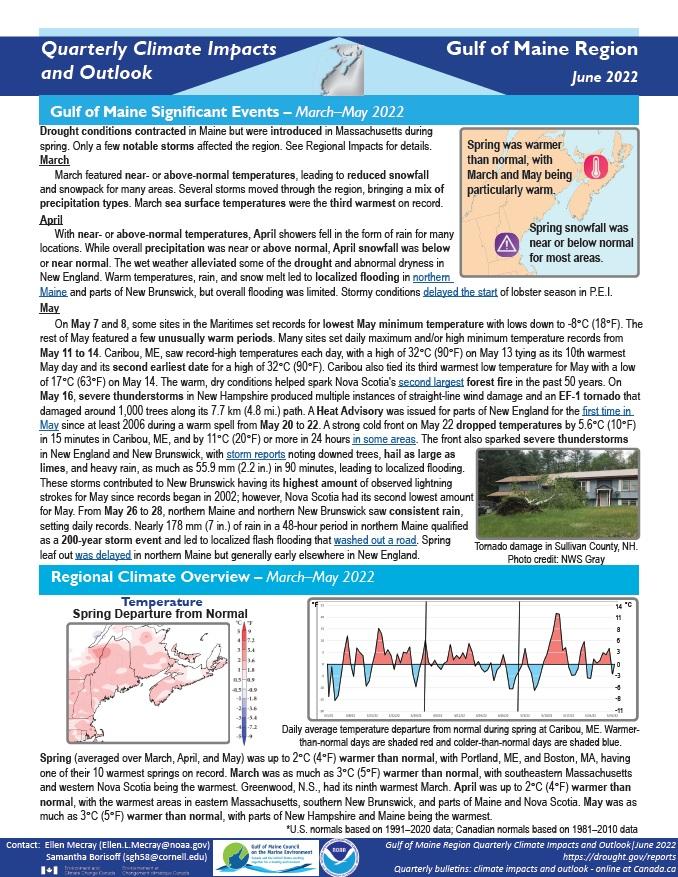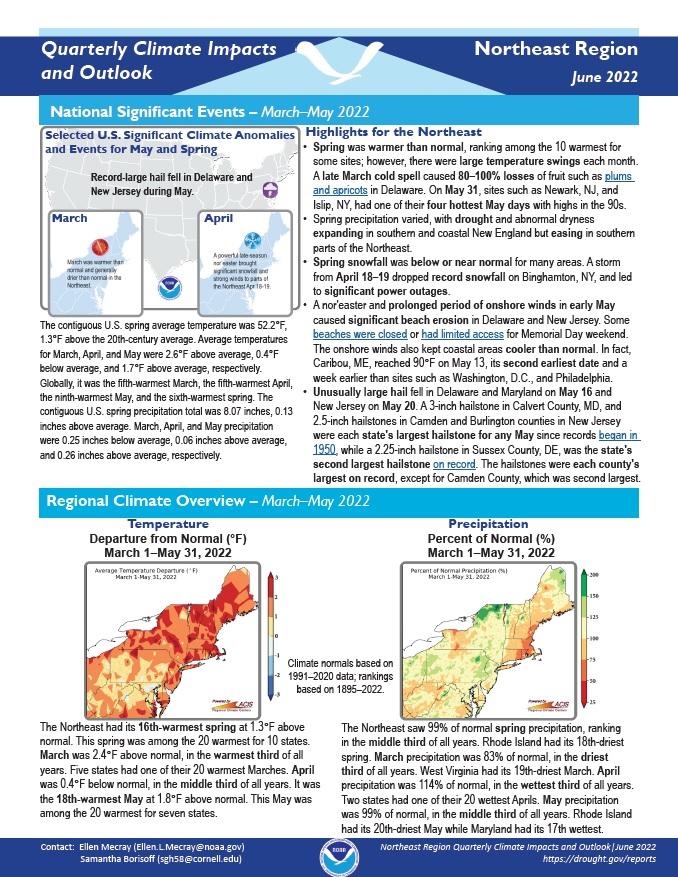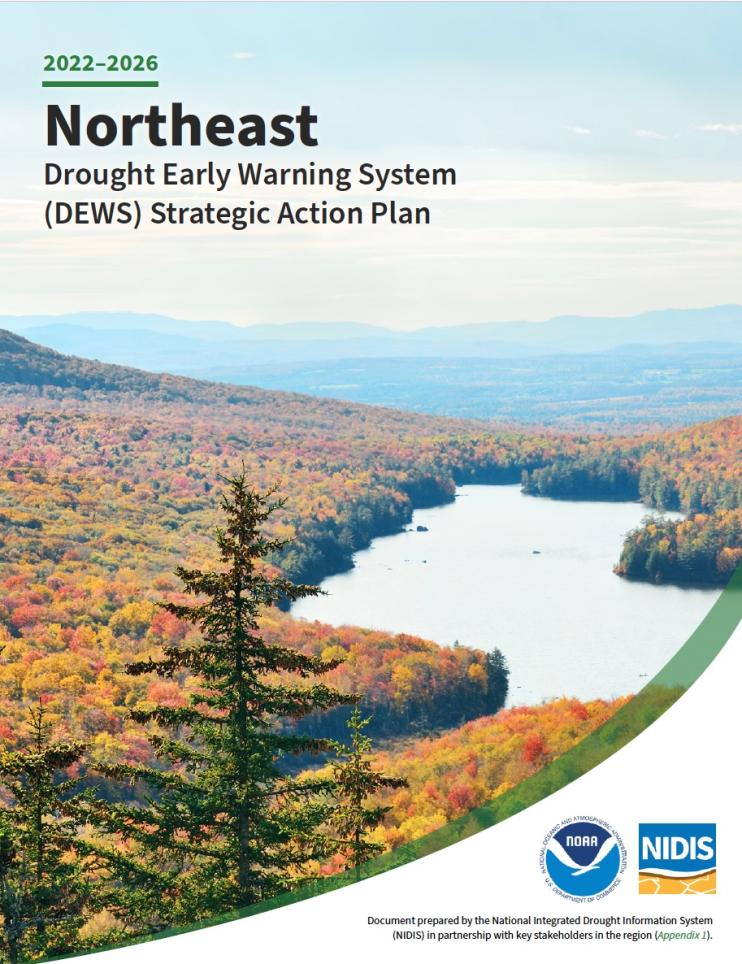Quarterly Climate Impacts and Outlook for the Mid-Atlantic Region for March–May 2022. Dated June 2022.
Temperatures were generally within two degrees of normal for the spring season across the Mid-Atlantic. This is similar to what was observed for the preceding summer, fall, and winter seasons. The region generally experienced slightly wetter than normal conditions, with most locations experiencing between 100% and 125% of their normal spring precipitation amounts.
Quarterly Climate Impacts and Outlook for the Gulf of Maine Region for March–May 2022. Dated June 2022.
Spring was up to 2°C (4°F) warmer than normal, with Portland, Maine, and Boston, Massachusetts, having one of their 10 warmest springs on record. Spring precipitation ranged from 50% of normal to 175% of normal.
Quarterly Climate Impacts and Outlook for the Northeast Region for March–May 2022. Dated June 2022.
Spring was warmer than normal, ranking among the 10 warmest for some sites; however, there were large temperature swings each month. Spring precipitation varied, with drought and abnormal dryness expanding in southern and coastal New England but easing in southern parts of the Northeast.
The purpose of the 2022–2026 Northeast Drought Early Warning System (DEWS) Strategic Action Plan is to document regionally identified needs and offer a guide for future activities that will improve drought early warning and preparedness in the Northeast DEWS. Partners from across New England and New York attended virtual listening sessions in October and November of 2020 to discuss the progress made and identify next steps.






